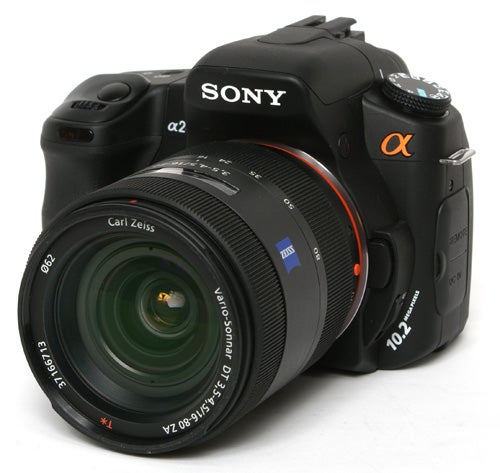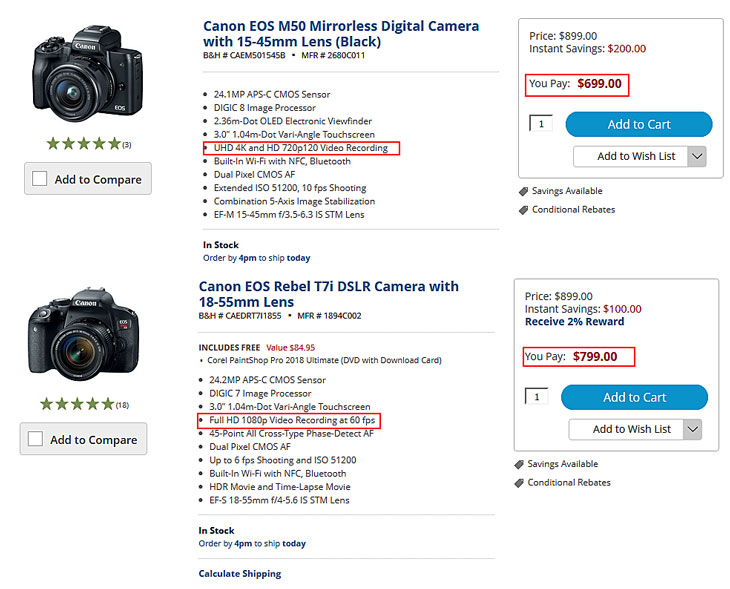What Is The Difference Between Full Frame And Dslr
What Is The Difference Between Full Frame And Dslr. Current medium format models typically offer frame rates of around 3fps. The actual difference between full frame and crop sensor is the actual physical sensor size. Canon eos r full frame mirrorless camera body weighs 580 g only body only whereas canon 1dx mark ii weighs 1340 g body only. Full frame digital cameras use a sensor thats equivalent in size to 35mm film 36 x 24mm and is the largest consumer.
 The Difference Between Full Frame Versus Crop Frame Cameras Thelawtog Full Frame Photography Basics Camera
The Difference Between Full Frame Versus Crop Frame Cameras Thelawtog Full Frame Photography Basics Camera
Current medium format models typically offer frame rates of around 3fps. I love the rugged quality and the great battery life richard has progressed from an eos 1d x to an eos 1d x mark ii and now an eos 1d x mark iii and says that a key strength of the dslr is its familiarity a crucial factor when working on fast paced action shoots. Then again there may be times when you need something. The sensor size is actually the same size as a frame of traditional 35mm film. Due to their large image sensors medium format dslr cameras are traditionally heavier and bulkier than their full frame counterparts. You see full frame sensors have consistent dimensions of 24x36mm.
A full frame sensor will also give you a shallower depth of field.
Image quality differences between aps c and full frame when it comes to overall image quality full frame cameras have a definite advantage over aps c cameras. But that changed as brands like hasselblad have come out with smaller mirrorless medium format cameras like the x1d ii to provide photographers with a lighter more compact option. A full frame dslr is a digital single lens reflex camera dslr with a 35 mm image sensor format 36 mm 24 mm. Full frame refers to the size of the sensor. For full frame dslr canon has a huge range of bodies and lenses to choose from. Nikon makes a dx format sensor and an fx format sensor.

What is the difference anyway. In digital slr cameras the cameras format refers to the size of its image sensor. The sensor is the physical rectangle in the center of your dslr camera that reads the image from the lens. Full frame refers to the size of the sensor. So in conclusion a full frame sensor dslr and a crop sensor dslr have their own advantages and disadvantages.

So in conclusion a full frame sensor dslr and a crop sensor dslr have their own advantages and disadvantages. If you compare the top end full frame mirrorless camera body and a top end full frame dslr camera body then the mirrorless weighs much less than the respective dslr body. While a full frame dslr provides a bit better overall quality both have their uses. The cameras typically use the same sensors but there are also smaller formats for even smaller cameras. Then again there may be times when you need something.

Naturally you may not need these kinds of speeds for many subjects. The benefits of using a full frame camera include great performance in low light an immersive bokeh effect for portrait photography and unrivaled control over depth of field. If you compare the top end full frame mirrorless camera body and a top end full frame dslr camera body then the mirrorless weighs much less than the respective dslr body. Dslr refers to the mechanism that the camera uses. Historically 35 mm was considered a small film format compared with medium format large format and even larger.

Full frame digital cameras use a sensor thats equivalent in size to 35mm film 36 x 24mm and is the largest consumer. Dslr refers to the mechanism that the camera uses. The full frame dslr is in contrast to full frame mirrorless interchangeable lens cameras and dslr and mirrorless cameras with smaller sensors for instance. Full frame cameras designed for general use may offer 5 or 6fps but those targeted specifically towards sports photographers may between 10 20fps. But that changed as brands like hasselblad have come out with smaller mirrorless medium format cameras like the x1d ii to provide photographers with a lighter more compact option.

In digital slr cameras the cameras format refers to the size of its image sensor. Smaller images also mean less lag time when saving images to the memory card. So as far as dslr goes there are two major professional options dslr and mirrorless. The benefits of using a full frame camera include great performance in low light an immersive bokeh effect for portrait photography and unrivaled control over depth of field. That sensor lives inside the full frame sensor camera.

If you compare the top end full frame mirrorless camera body and a top end full frame dslr camera body then the mirrorless weighs much less than the respective dslr body. The larger full frame fx format sensor measures 36x24mm which is approximately the same size as 35mm film. Dslrs use aps c or full frame sensors. What is the difference anyway. Canon eos r full frame mirrorless camera body weighs 580 g only body only whereas canon 1dx mark ii weighs 1340 g body only.

Canon eos r full frame mirrorless camera body weighs 580 g only body only whereas canon 1dx mark ii weighs 1340 g body only. That sensor lives inside the full frame sensor camera. But that changed as brands like hasselblad have come out with smaller mirrorless medium format cameras like the x1d ii to provide photographers with a lighter more compact option. The more popular aps c sensor size found in most dslrs and mirrorless cameras. A full frame camera has a sensor the size of a 35mm film camera 24mm x 36mm.

For full frame dslr canon has a huge range of bodies and lenses to choose from. Historically 35 mm was considered a small film format compared with medium format large format and even larger. Full frame cameras designed for general use may offer 5 or 6fps but those targeted specifically towards sports photographers may between 10 20fps. But that changed as brands like hasselblad have come out with smaller mirrorless medium format cameras like the x1d ii to provide photographers with a lighter more compact option. Smaller images also mean less lag time when saving images to the memory card.

Smaller images also mean less lag time when saving images to the memory card. The actual difference between full frame and crop sensor is the actual physical sensor size. So the dslr weighs almost double the mirrorless. If you were to open up a full frame camera and a crop sensor camera and place them side by side youd see that the full frame sensor is noticeably larger than the crop sensor. Generally the larger the sensor the more light and detail you are able to capture and the higher your image quality will be.

Current medium format models typically offer frame rates of around 3fps. Generally the larger the sensor the more light and detail you are able to capture and the higher your image quality will be. The more popular aps c sensor size found in most dslrs and mirrorless cameras. Dslrs use aps c or full frame sensors. In digital slr cameras the cameras format refers to the size of its image sensor.

I love the rugged quality and the great battery life richard has progressed from an eos 1d x to an eos 1d x mark ii and now an eos 1d x mark iii and says that a key strength of the dslr is its familiarity a crucial factor when working on fast paced action shoots. Due to their large image sensors medium format dslr cameras are traditionally heavier and bulkier than their full frame counterparts. Because crop sensor cameras have less information to record they often have a faster burst mode than full frame cameras at least in the dslr world. A full frame sensor will also give you a shallower depth of field. What is a full frame camera.

The important factor is the type of photography that you. The larger full frame fx format sensor measures 36x24mm which is approximately the same size as 35mm film. What is a full frame camera. A full frame dslr is a digital single lens reflex camera dslr with a 35 mm image sensor format 36 mm 24 mm. So as far as dslr goes there are two major professional options dslr and mirrorless.

In digital slr cameras the cameras format refers to the size of its image sensor. What is the difference anyway. Full frame cameras designed for general use may offer 5 or 6fps but those targeted specifically towards sports photographers may between 10 20fps. The cameras typically use the same sensors but there are also smaller formats for even smaller cameras. Then again there may be times when you need something.

If you were to open up a full frame camera and a crop sensor camera and place them side by side youd see that the full frame sensor is noticeably larger than the crop sensor. Full frame cameras designed for general use may offer 5 or 6fps but those targeted specifically towards sports photographers may between 10 20fps. The actual difference between full frame and crop sensor is the actual physical sensor size. Then again there may be times when you need something. The larger full frame fx format sensor measures 36x24mm which is approximately the same size as 35mm film.

Image quality differences between aps c and full frame when it comes to overall image quality full frame cameras have a definite advantage over aps c cameras. One of the most heavily touted benefits to having a full frame camera compared to an aps c camera is the better quality images. What is a full frame camera. Current medium format models typically offer frame rates of around 3fps. The more popular aps c sensor size found in most dslrs and mirrorless cameras.

A full frame dslr is a digital single lens reflex camera dslr with a 35 mm image sensor format 36 mm 24 mm. A full frame camera has a sensor the size of a 35mm film camera 24mm x 36mm. A full frame sensor will also give you a shallower depth of field. That sensor lives inside the full frame sensor camera. Dslr refers to the mechanism that the camera uses.

The larger full frame fx format sensor measures 36x24mm which is approximately the same size as 35mm film. The dx format is the smaller sensor at 24x16mm. So in conclusion a full frame sensor dslr and a crop sensor dslr have their own advantages and disadvantages. For full frame dslr canon has a huge range of bodies and lenses to choose from. The sensor is the physical rectangle in the center of your dslr camera that reads the image from the lens.

Full frame refers to the size of the sensor. The full frame dslr is in contrast to full frame mirrorless interchangeable lens cameras and dslr and mirrorless cameras with smaller sensors for instance. A full frame sensor will also give you a shallower depth of field. Image quality differences between aps c and full frame when it comes to overall image quality full frame cameras have a definite advantage over aps c cameras. The actual difference between full frame and crop sensor is the actual physical sensor size.








